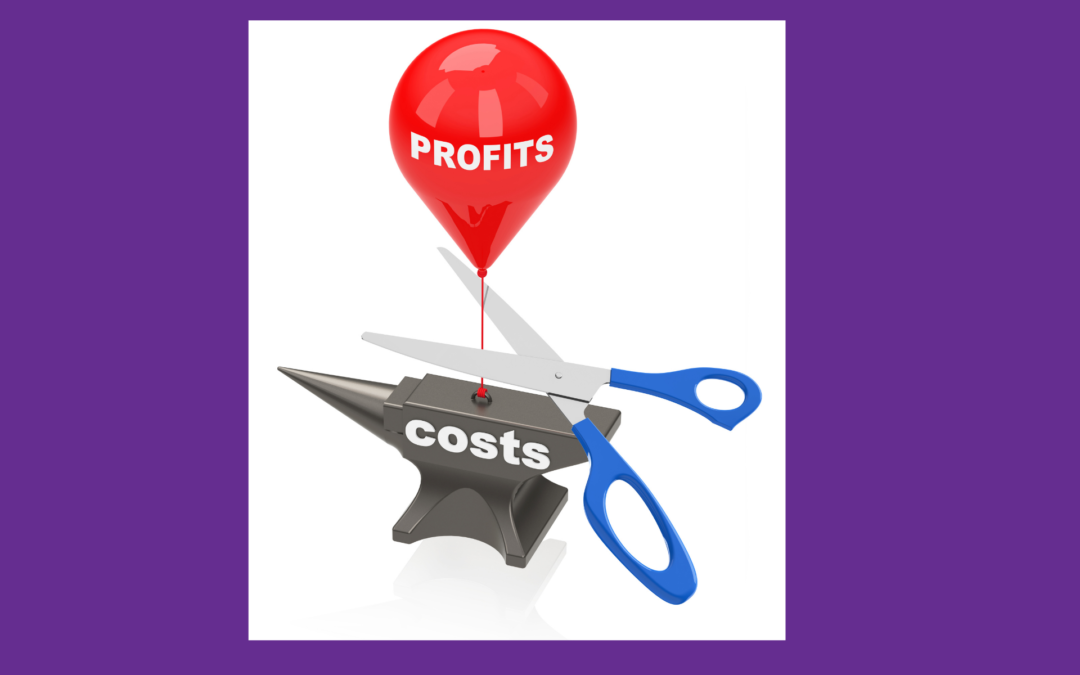How operational gearing affects your business
Do you know How operational gearing affects your business? In a nutshell it shows much risk you have, and affects your survival, growth, and prosperity.
What is operational gearing?
Firstly, let us talk terms. Operational gearing is a term used to describe the effect that fixed costs can have on the relationship that exists between sales and your operating profits. If your business has no operational gearing, then profits would rise at the same rate that sales increase.
This blog and video will help you understand how this concept works and why it’s important to your business. We’ll also share our FREE online calculator which shows you quickly what your operational gearing looks like. Above all, it allows you to play with options for managing your company’s operational gears, so they do not get in the way of profit growth.
An indicator that measures the degree to which an increase (or decrease) in revenue will affect profits
What type of costs does your business have
Your business will have a mix of costs, fixed and variable cost. Fixed costs stay the same, they do not change. Your variable costs on the other hand do change, they do fluctuate. What makes theme change is your business activity, for example when you are selling, or making something.
Let’s look at these costs when it comes to your car, stay with me on this, there’s method. If your car stays parked on your drive you still must pay insurance and road tax. Once you stay driving it then you fuel costs start to increase. Insurance and road tax are your fixed costs, fuel is your variable costs, your activity is the distance you drive, the number of journeys you go on.
If your business makes things then making the things is one activity, your warehouse rent, and staff are your fixed costs. Once you start selling (another activity) then the costs of packaging and delivery will go up. Where your business is in hospitality then no customers (business activity) mean costs like rent, chefs, and waiters salaries (fixed costs) stay the same, food and drink costs (variable costs) do not move.
How costs affect your business risk and profitability.
Your costs, moreover, the amount and type of costs you have affects your business risk and profitability. Adding more fixed costs can increase your risk, your operational gearing is a measure of that risk.
Gearing, also called leverage measures the level of fixed costs against your total costs. The more fixed costs you have then the greater the risk, the less you have the smaller the risk.
However, high fixed costs are not necessarily a bad thing. In fact many businesses generate good levels of profits with high fixed costs. Imagine you are deciding whether to employ someone or use a freelancer. Lots of good reasons for either, cost will be a factor.
Employing someone will be an extra fixed cost, for example the wages, pensions, and employer’s national insurance. If you use a freelancer then normally no need to worry about pensions and national insurance. The freelancer cost will be your variable cost. Use our FREE online Payroll calculator to calculate your payroll costs.
When your sales increase you will make more profit where you have employed someone, less so when that person is a freelancer. Why should that be so? Well, your fixed costs are spread over more sales, so the average cost per unit, per pound of sales goes, profit goes up. Obviously, when sales dip, then the reverse happens, and less profit will be made.
See below for the comparison between two businesses, different costs structures and the impact that an increase and decrease in sales has. It’s a powerful way to see How operational gearing affects your business.
| Sales increase 20% | Sales increase 20% | Sales drop 20% | Sales drop 20% | |||
|---|---|---|---|---|---|---|
| Business A | Business B | Business A | Business B | Business A | Business B | |
| $000s | $000s | $000s | $000s | $000s | $000s | |
| Sales | 200 | 200 | 240 | 240 | 160 | 160 |
| Variable costs | 120 | 30 | 144 | 36 | 96 | 24 |
| Fixed costs | 30 | 120 | 30 | 120 | 30 | 120 |
| Operating profits | 50 | 50 | 66 | 84 | 34 | 16 |
| Total costs | 150 | 150 | 174 | 156 | 126 | 144 |
| Gearing ratio | 20% | 80% | 17.2% | 76.9% | 23.8% | 83.3% |
| Profit change $000s | +16 | +34 | -16 | -34 | ||
| Profit change % | +32% | +68% | -32% | -68% |
Conclusion
The more fixed costs there are in a business, the greater its need for high levels of revenue to break even or make a profit. This means it’s important for companies with high levels of fixed costs to focus on ways they can grow their revenues quickly and efficiently.
We’ve created this free online calculator so you can calculate your own level of operational gearing! It’s easy to use – just input some basic information about your company, and we’ll do all the calculations for you. You don’t need any special knowledge or training to understand what it means for your business.
Get in touch with us to see how we can help you with your capital gains and all your accounting and tax needs. For more business and finance , news, advice and tips, don’t forget to watch our weekly broadcasts, listen to our weekly podcast I Hate Numbers.
